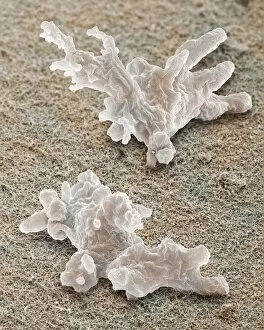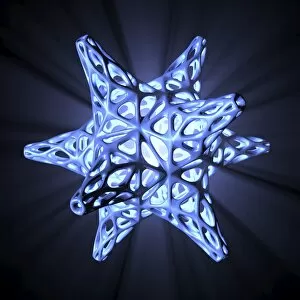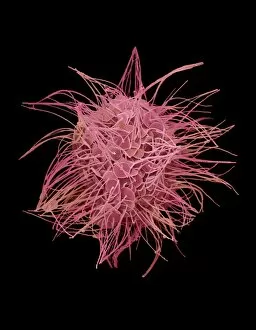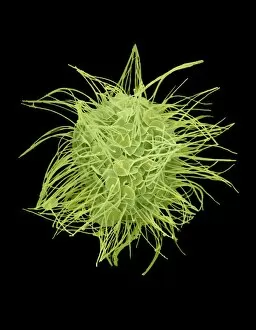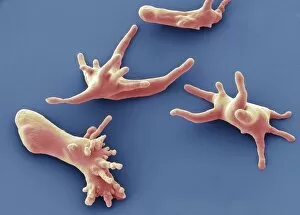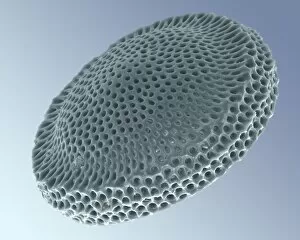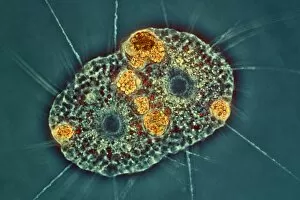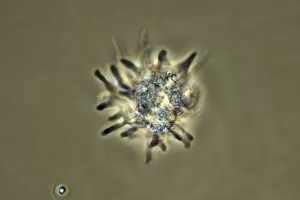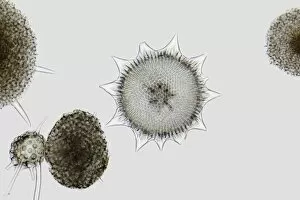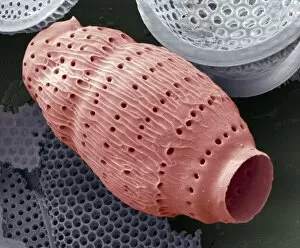Pseudopodia Collection
"Pseudopodia: Unveiling the Intricate World of Protozoa and Radiolarians" Delve into the mesmerizing realm of pseudopodia
All Professionally Made to Order for Quick Shipping
"Pseudopodia: Unveiling the Intricate World of Protozoa and Radiolarians" Delve into the mesmerizing realm of pseudopodia, as captured by scanning electron microscopy (SEM) and light micrography. Witness the intricate beauty of Acrosphaera radiolarian, Amoeba, Amoebae, Heliozoan, and other fascinating organisms. In stunning detail, SEM unveils the delicate structure of Acrosphaera radiolarian's pseudopodia. These slender extensions allow these single-celled creatures to move with grace through their aquatic habitats. Similarly, SEM showcases the amoeba's remarkable ability to extend its pseudopods in various directions for locomotion or engulfing prey. Radiolarians also boast an exquisite skeletal framework that is brought to life through artwork based on SEM images. The intricately designed skeletons serve as a testament to nature's artistry and provide protection for these microscopic marvels. Heliozoans take center stage under SEM examination too; their radiant pseudopodia reaching out like sunbeams in search of sustenance. The detailed imagery allows us to appreciate their unique morphology and understand how they navigate their environment with precision. Light micrographs offer a different perspective on these captivating organisms. In vibrant clarity, we witness amoeba protozoa gracefully gliding across surfaces using their flexible pseudopods as both feet and hands. These snapshots reveal the dynamic nature of life at this scale – constantly adapting and exploring new territories. Through SEM imaging C014 / 4862 & C014 / 4863 showcase radiolarians' striking forms resembling ethereal sculptures suspended in water - a reminder that beauty can be found even in seemingly invisible realms. Let your imagination soar as you explore this hidden world where tiny creatures wield extraordinary powers through their versatile pseudopodia – truly exemplifying nature's ingenuity at its finest.


